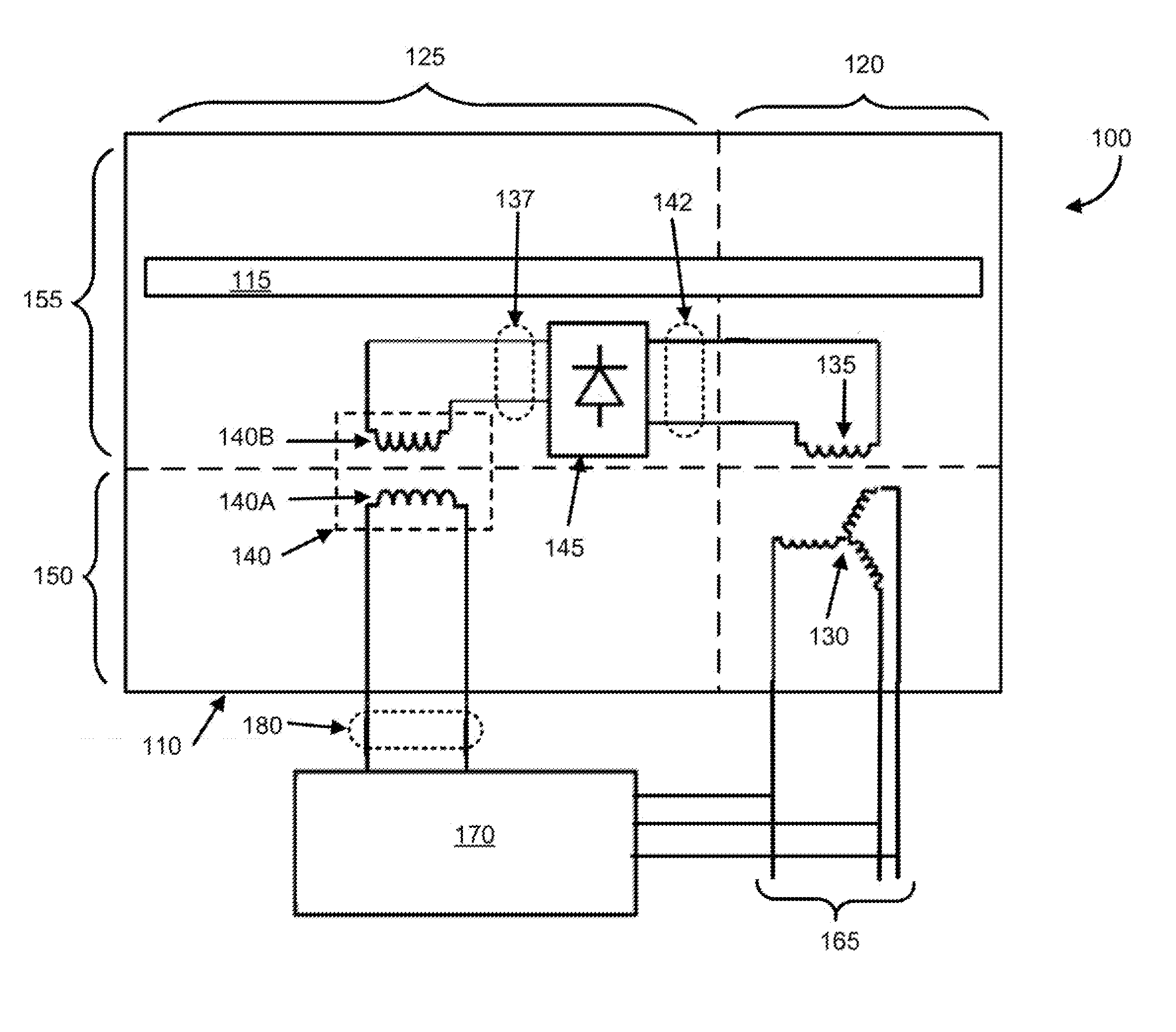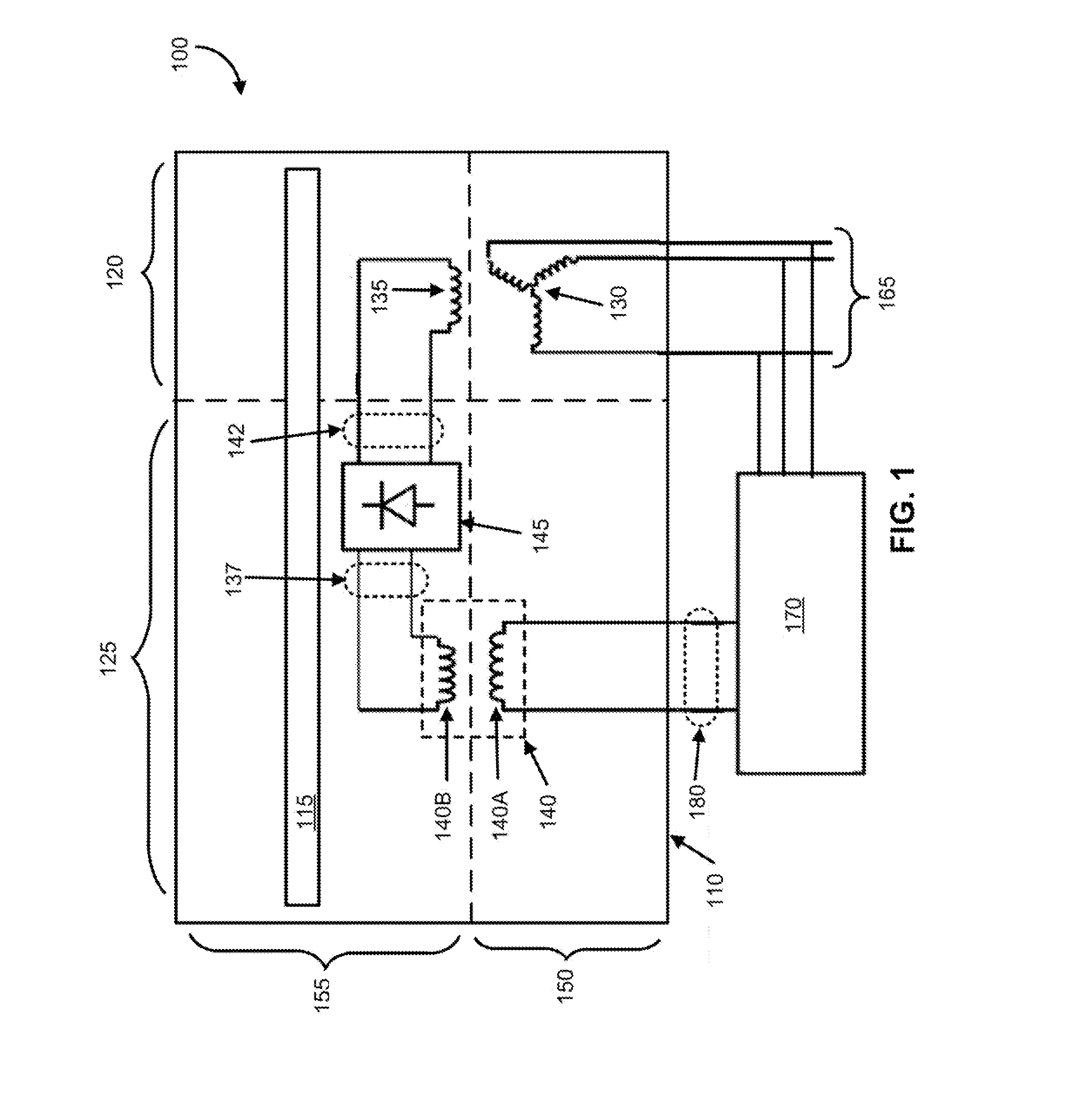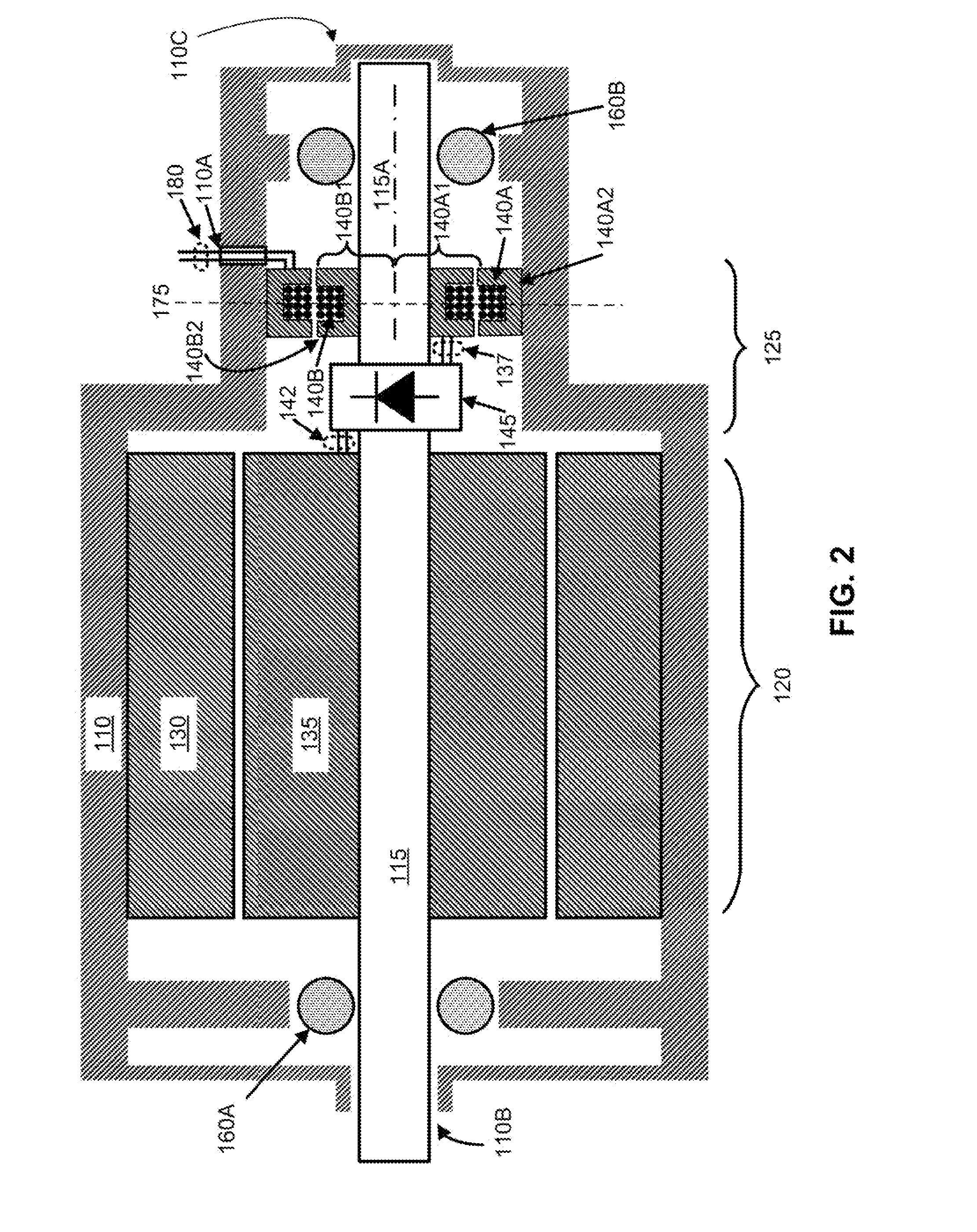Synchronous Machine With Common Motor/Generator Exciter Stage
a technology of exciter stage and synchronous machine, which is applied in the direction of synchronous generator control, synchronous motor, manufacturing stator/rotor body, etc., can solve the problems of synchronous machine, more complicated system in which it is being used, less reliable, and more complicated
- Summary
- Abstract
- Description
- Claims
- Application Information
AI Technical Summary
Benefits of technology
Problems solved by technology
Method used
Image
Examples
Embodiment Construction
[0011]FIG. 1 is a diagram of an exemplary synchronous machine 100. The synchronous machine 100 has a frame 110, a shaft 115, a main section 120, and an exciter section 125. The main section 120 has a stator 130 (a stationary winding, which may be an armature winding) which is mounted on the frame, and a rotor 135 (a rotating winding, which may be a field winding) which is mounted on the shaft 115. Part of or all of the frame 110 may be part of, or may be distinct from, a casing which encloses the synchronous machine 100.
[0012]The exciter section 125 has a transformer 140 and a rectifier 145. The transformer 140 has a primary winding 140A mounted on the frame 110 and a secondary winding 140B mounted on the shaft 115. The secondary winding 140B is spaced apart from, and is magnetically coupled to, the primary winding 140A. The rectifier 145 is electrically connected by a plurality of electrical conductors 137 to the secondary winding 140B, is electrically connected by a plurality of e...
PUM
 Login to View More
Login to View More Abstract
Description
Claims
Application Information
 Login to View More
Login to View More - R&D
- Intellectual Property
- Life Sciences
- Materials
- Tech Scout
- Unparalleled Data Quality
- Higher Quality Content
- 60% Fewer Hallucinations
Browse by: Latest US Patents, China's latest patents, Technical Efficacy Thesaurus, Application Domain, Technology Topic, Popular Technical Reports.
© 2025 PatSnap. All rights reserved.Legal|Privacy policy|Modern Slavery Act Transparency Statement|Sitemap|About US| Contact US: help@patsnap.com



